Earth Day: The Mountain is Always Out
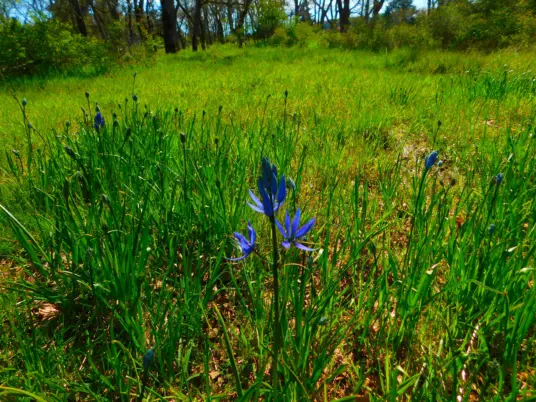
April’s Frost and Flower
by Marcia Wilson
April is always a tumultuous month for the Puget Sound region, with conditions swaying frantically between dismal and balmy, from overnight frosts to sunglasses by day. Proving spring is forever subject to change, the college wetlands ran the gamut of last-minute cold snaps and unusual early-bloomers. This year, the campus witnessed a brief but dramatic Dogwood Winter only three days before Earth Day.
What’s a Dogwood Winter?
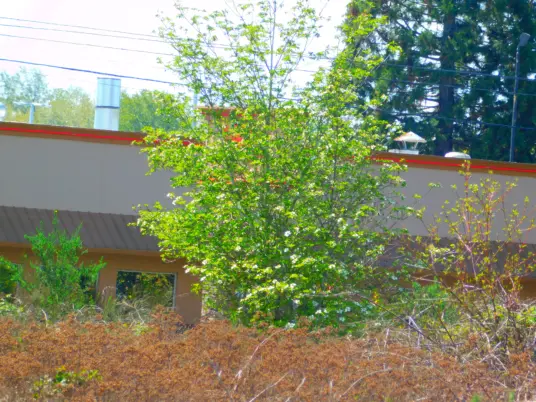
First, a brief explanation for “cold snap.” This term has been around for hundreds of years and is related to the word, “frostbite.” Snap is an old Middle German word for bite, and cold snap is a synonym for frostbite. Cold snaps are still a concern for the world’s food crops. Planting is a calculated gamble and the stakes are increasingly high. The origins of term “dogwood winter” are prone to lore, but the why is obvious: the phrase points to a brief return to winter-like weather somewhere between late April and early May. According to The Farmers Almanac, farmers could rely upon the appearance of dogwood blooms for the timing of spring plantings.
Dogwood Winter isn’t as well known as Blackberry Winter, which–obviously–means a cool spell when the blackberries are in bloom. Blackberry Winters are almost poetically gorgeous. The cool weather combines with large fields of white blossoms like snowfall.
Lovely though they are, the cold snaps cause a lot of trouble in agrarian regions where the least miscalculation on temperature can delay or ruin a future harvest. In the Eastern United States, Appalachians still use the old weather terms and there are six spring snaps named after a coinciding circumstance: Dogwood, Blackberry, Whip-por-will, Redbud, Locust, and Britches Winters. The last term suggests one may have put the thermal underwear into storage a little too soon!
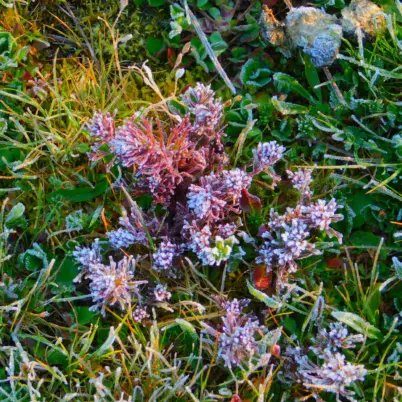
The Earth Day volunteers spent hours in the ongoing restoration of its native prairie, and brought back a report of new blooms for the year:
Camas
The signature plant of the Western Washington prairies, camas was a priceless food plant for the Indigenous peoples.
Checker Lily/Chocolate Lily
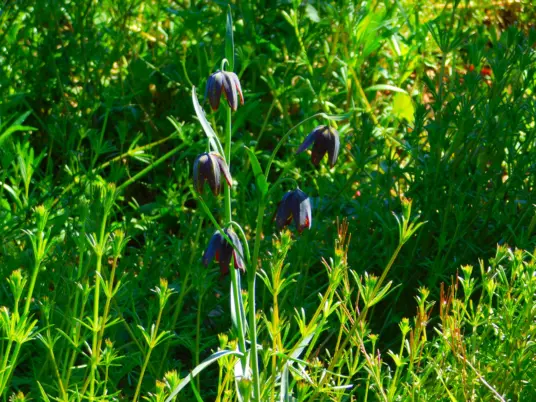
Gorgeous but a brief bloomer, difficult to see. Many will only bloom on alternate years. Also called Rice Root, this was another food plant that kept people–and wildlife–alive.
Woodland Star, or, Indian Pink, č’tilqwɘbš
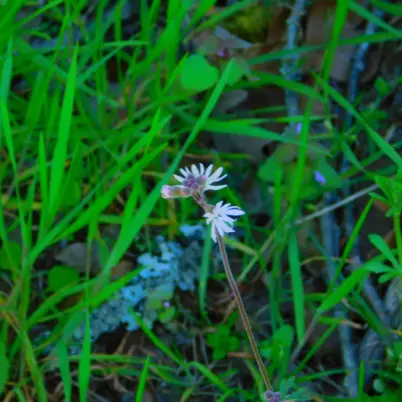
An entire book could be written about this little wildling, which was re-discovered on the college grounds by accident in 2022. Steilacoom is the Anglicization of the original č’tilqwɘbš. Almost invisible in the grasses, this tiny flower once bloomed in such quantities that the Indigenous who lived around them were called “the people of the Indian Pink area.” It was nearly eradicated from the region but an exhaustive effort from the Steilacoom people, plus wilding gardeners, are bringing this beauty back to portions of Lakewood, University Place, and Steilacoom. At this point, only one Woodland Star has been found in the lab. Its location is not disclosed to the public.
Fringecup
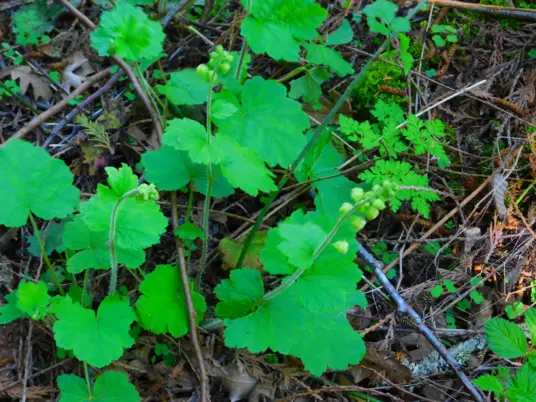
The other small pink flower that made the Steilacoom area pink in the spring. This is a relative of the showier Western Bleeding Heart. It can stay green in mild winters, and occasionally takes over an area as a groundcover. This is usually not a problem because the plant is slug-resistant and hummingbirds rely on the blooms for food in cool, damp forests.
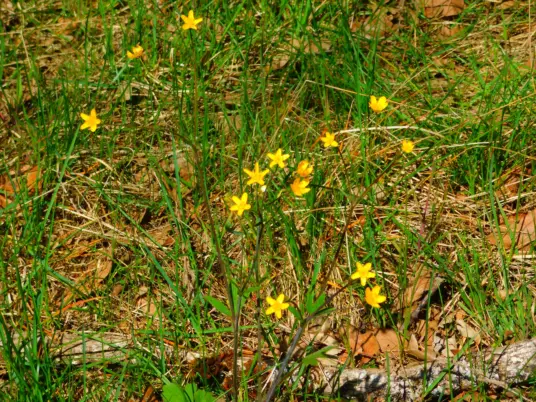
Western Buttercups
Who gets excited about buttercups? The Environmental Science students!
These perky, upright flowers are taller than the non-native species, which helps them compete with the introduced grasses. While they are poisonous and irritating to humans and most mammals, the brilliant yellow blossoms attract nearly all of Western Washington’s native bees. Our native bees need all the help they can get! Deer avoid buttercups, and this hardy plant has few, if any, susceptibilities to disease or pests. As an early bloomer that attracts pollinators, ranunculus occidentalis is slowly becoming more respectable among landscapers
As you wish!
Western Serviceberry
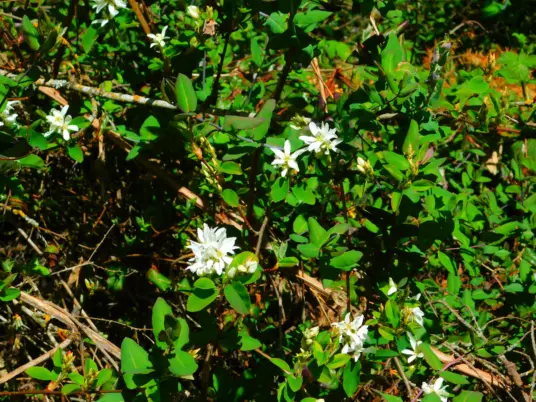
This is the closest Western relative to the Redbud mentioned of Redbud Winter. The sweet fruits are delectable and full of water, which helps the thirsty wildlife overcome the stress of a drought year. Sometimes known as Juneberry, they’ve more recently become known in Canada and Alaska as a substitute for blueberries, as they grow well in areas that are otherwise too cold for blueberries. Juneberries can be eaten fresh, preserved, or used in recipes. They can also be used to make beverages like beer and cider.
Every portion of this small tree is useful in some way. Thanks to organizations such as the American Indian Health and Diet Project, attention is coming back to this overlooked little gem.
At CPTC this year, Earth Day was warm, but a Dogwood Winter was right on its heels. Spring is progressively changing but never static. For those who wonder when is the best time to go in search of ephemeral spring blooms, keep in mind that these early flowers are like the mountain: always out… somewhere!